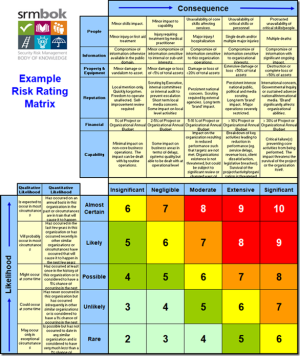Originally posted on October 22, 2013 @ 6:45 AM
Why not do some observing this week and see what are the most popular words spoken and written in your organisation. The way we prime and frame organizational discourse shapes the culture and focus on safety.
 When I am first introduced to an organisation I like to explore their cultural artifacts (things on walls, symbols, charts, policies and objects) and what the organisation says about themselves. I always look for words (and hidden text) that is present in an organisations self-declarations. More importantly, I also listen and look for words that are missing from their artifacts, documents, policies and systems. Some of the key words I seek out are the following: ‘learning’, ‘understanding’, ‘tolerance’, ‘together’, ‘listening’, ‘helping’, ‘share’, ‘respect’, ‘belonging’, ‘collaboration’ and ‘forgiveness’. These aren’t just the words we need to maintain relationships in our daily life, they are the ‘glue’ of organisational effectiveness. Our work, organisation and team, including safety, will only be as good as the quality of our relationships, this is because the foundation of all safety is trust.
When I am first introduced to an organisation I like to explore their cultural artifacts (things on walls, symbols, charts, policies and objects) and what the organisation says about themselves. I always look for words (and hidden text) that is present in an organisations self-declarations. More importantly, I also listen and look for words that are missing from their artifacts, documents, policies and systems. Some of the key words I seek out are the following: ‘learning’, ‘understanding’, ‘tolerance’, ‘together’, ‘listening’, ‘helping’, ‘share’, ‘respect’, ‘belonging’, ‘collaboration’ and ‘forgiveness’. These aren’t just the words we need to maintain relationships in our daily life, they are the ‘glue’ of organisational effectiveness. Our work, organisation and team, including safety, will only be as good as the quality of our relationships, this is because the foundation of all safety is trust.
It is also valuable to observe spacial layout of offices, workspaces, workflow diagrams, organizational charts and various ways culture is communicated visually. You can learn a lot about an organisation by what is not said, if you know what you are looking and listening for. When organisations only have constant repetitions of words like ‘compliance’, ‘vigilance’, ‘policing’, ‘zero’ and ‘control’, we know what’s going on.
One of the best indicators of an organisations approach to leadership in risk and safety is the way they use prepositions. Prepositions are words that precede a noun or pronoun and show the relationship and link of people to people and people to objects. Prepositions indicate position, space, movement and time in relationships. The way we use prepositions indicates a great deal about our culture, rank, roles and status in risk, safety and leadership. Leadership in risk and safety is essentially a social activity and so the way we use prepositional relationships in language reveals the real discourse in risk in an organisation. We are what we walk and talk.
What do the presence of the following prepositions imply for risk and safety discourse in relation to the people we work with?
Over, above and on top of
The emphasis of these prepositions is authoritarian in nature. When roles of risk and safety are ‘over’ and ‘controlling’ others there is little empathy in the air. The authoritarian or ‘f’ type as documented by Adorno, Levinson, Brunswick and others is alive and well in such organisations. There can be no safety ownership in the authoritarian organisation, people are only safe when the competent other is around. Such organisations are specialists at ‘dumbing down’ the workforce. The presumption is that everyone is stupid except me.
Beside, with and next to
The emphasis of these prepositions is about knowing we are like each other, there is understanding and belief that ‘there but by the grace of god go I’. There is no need for superiority with such prepositions because trust and ownership are the foundation of relationships. When we accept the fundamental premise of human mutual fallibility, we think differently about risk and safety, freedom and control.
Below, beneath and under
These prepositions when used in relationships generally indicate submission. Whilst the organizational chart and pay scale may indicate otherwise, we share the same skin, words, resources, illnesses and ending. When I was in Tallin in Estonia I saw that amazing painting ‘The Dance of Death’ in St Nicholas’s Church. This fragment of the original 30 metre painting is mesmerising. I stood there for an hour just working through its amazing features and have a print of it on the wall of my study. This 15th century artwork portrays all of the nobles, royals, clergy and officials being visited by the Black Death, The Plague. There was no discrimination according to class or wealth, all were vulnerable and human. I discuss this because sometimes we get a strange idea that perfection is possible (zero) and then act like absolutes are achievable. Such delusions are always defeated by time. The priming of such language eventually leads to superiority, dominance and hiding.
Those who know of their own vulnerability learn the gift of giving, learning and helping. There is no place in a healthy relationship for dominance and one way traffic.
Between, across and behind
These prepositions sometimes indicate conflict and the fact that there once was a relationship but it is now broken. The emphasis of difference leads to division, the emphasis on similarity and likeness leads to harmony and relationship. The work of Cameron and Quinn is foundational reading for those interested in culture and organizational health. Their work provides excellent tools for the evaluation of competing values and goals in organisations. The idea that there are only binary goals (eg. zero) and binary values (eg. safety) is a nonsense. Much of the methodology for my MiProfile organizational culture survey is based on their work. When we know there are things between us, that not be a problem, the question is what do we do about it? If we use information and power that is between us to push people away and behind us then there is no relationship nor likelihood of recovery.
Throughout, around and outside
The things about us and objects we work with whilst hopefully shared are not human, and so the focus on objects in safety doesn’t make sense. I recently purchased a safety text book (published date 2014) and as I looked inside was not surprised by the contents. The book starts with legislation! Why doesn’t the safety world get it, the book should start with people. As I waded through the book I was not surprised, nothing on effective collaboration, communication, skills of engagement, understanding decision making, relationships or what makes people tick just 350 pages of legislation and compliance. Poor little safety, policeman of an Act and detectives of objects (hazards).
Why not do some observing this week and see what are the most popular words spoken and written in your organisation. The way we prime and frame organizational discourse shapes the culture and focus on safety.



Do you have any thoughts? Please share them below